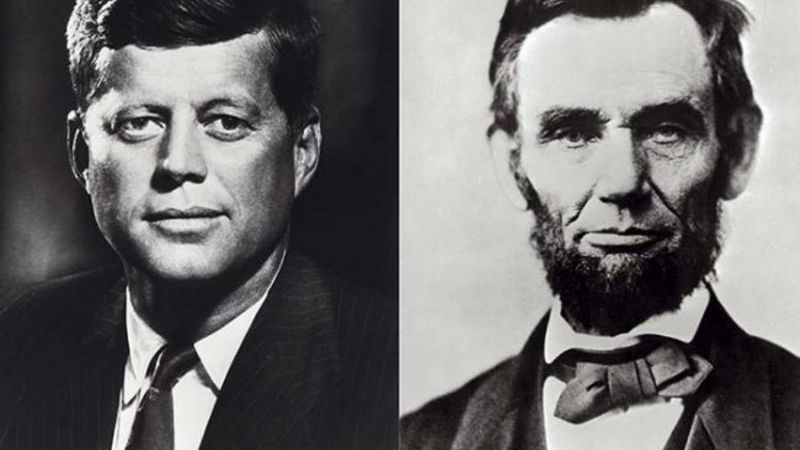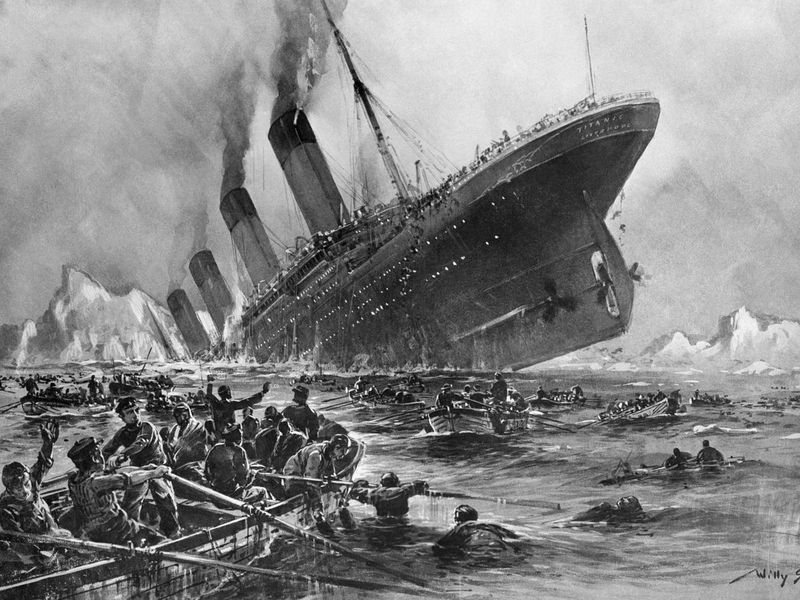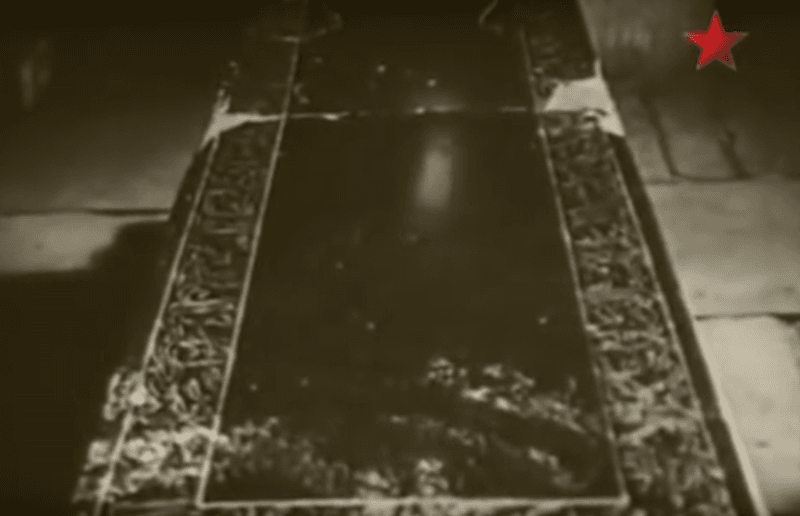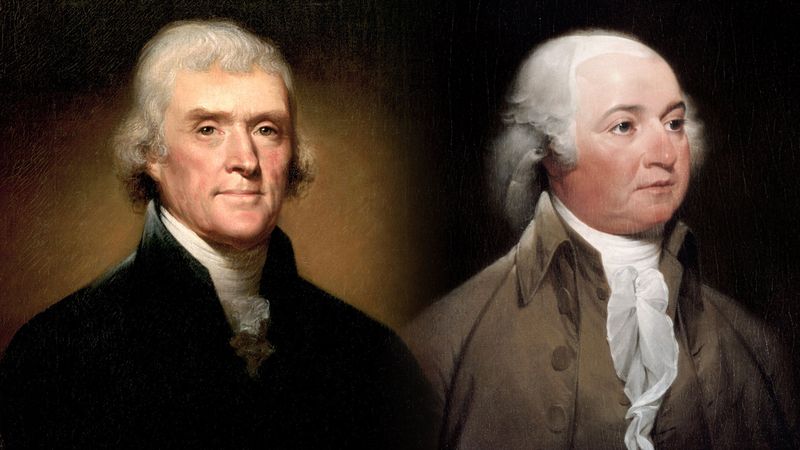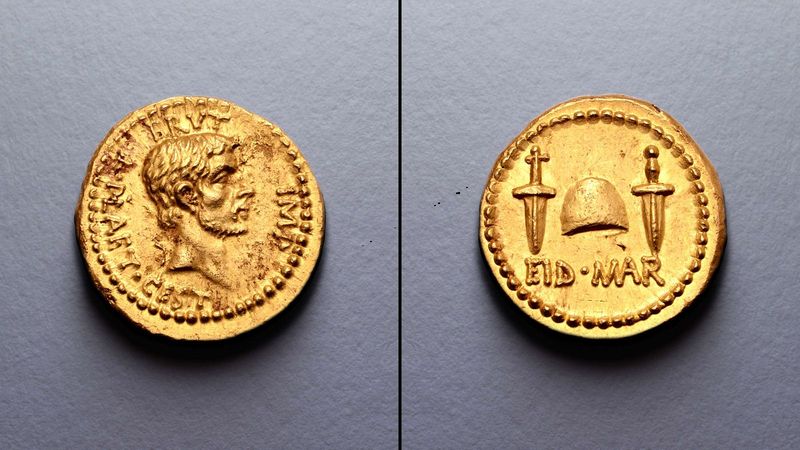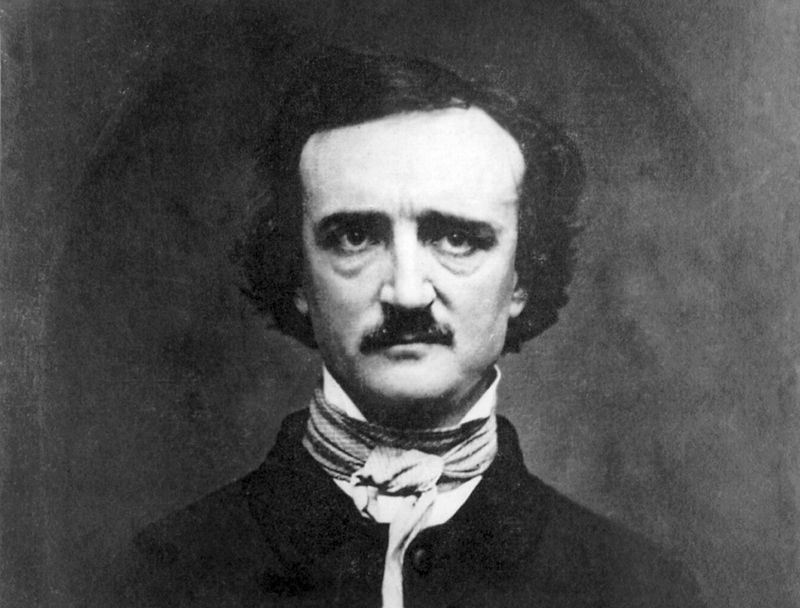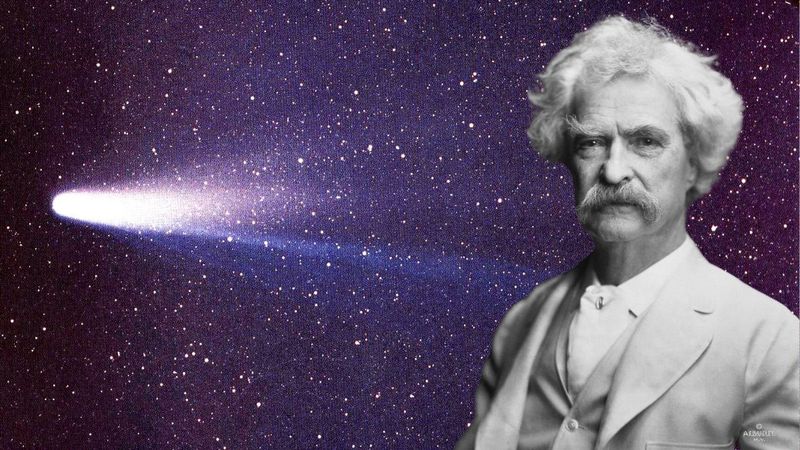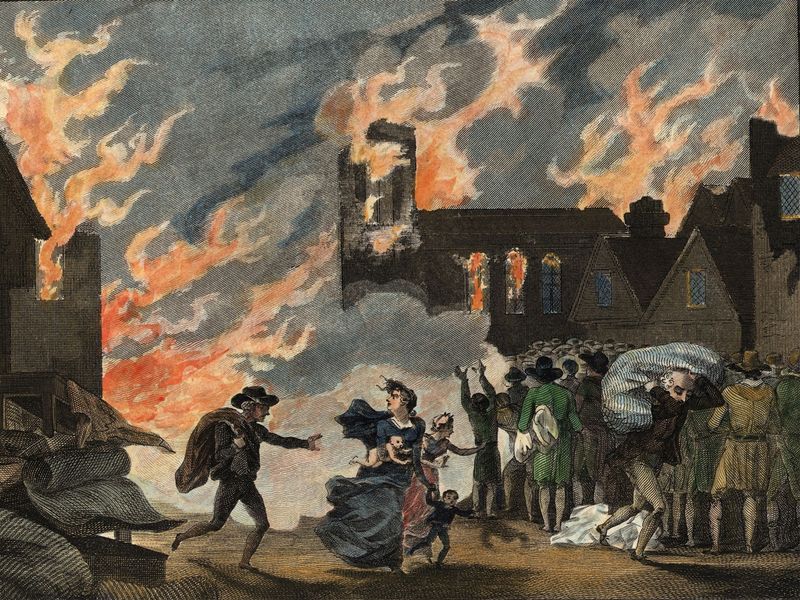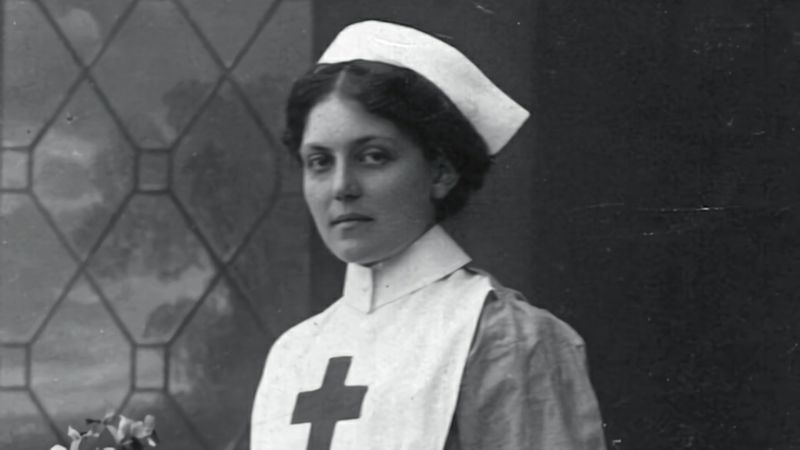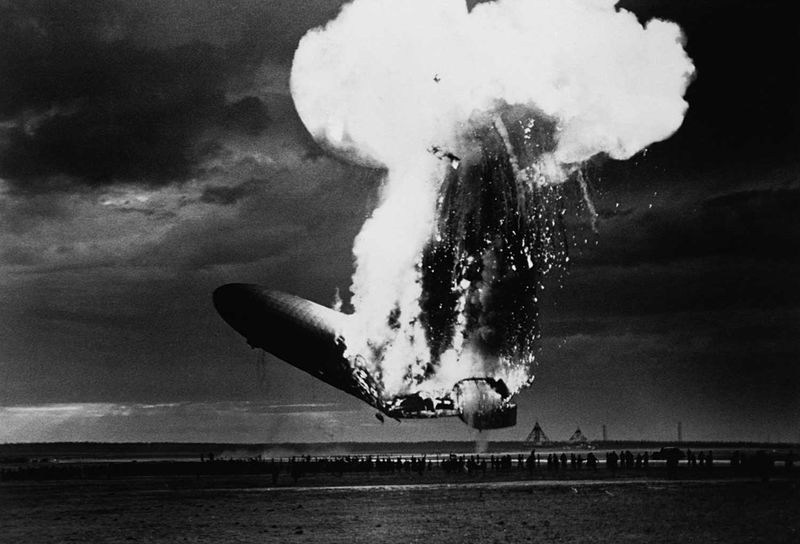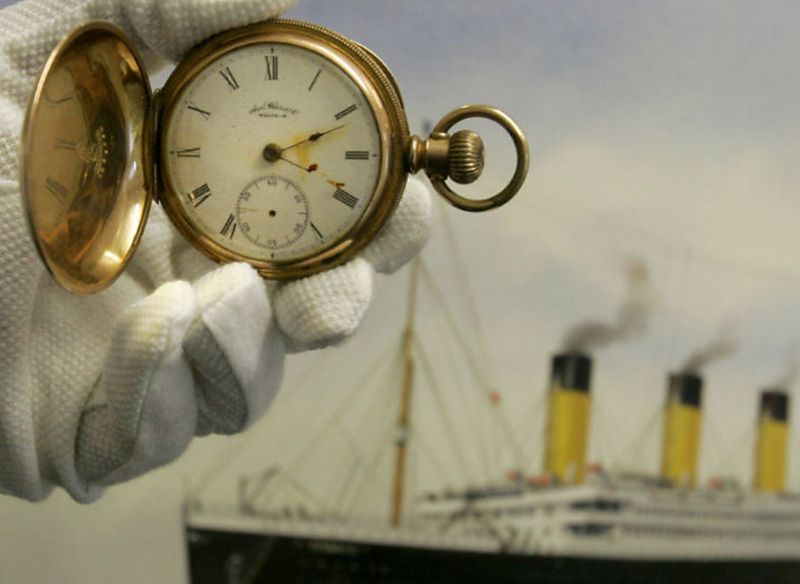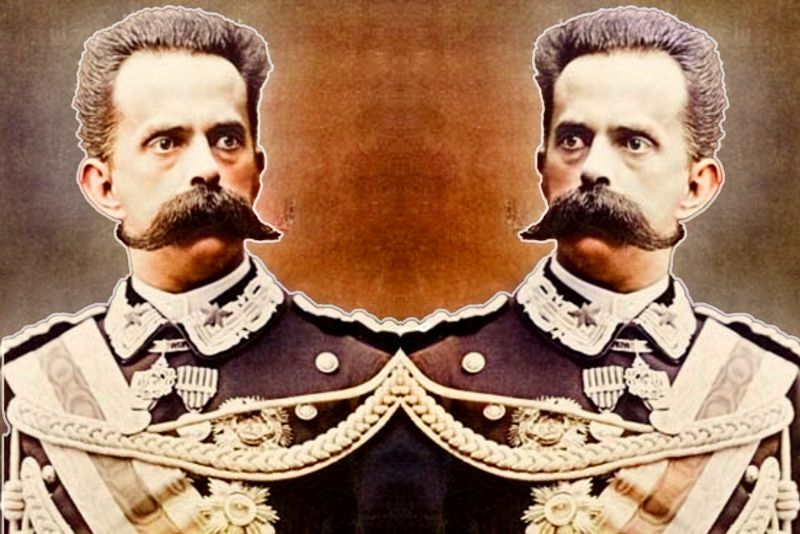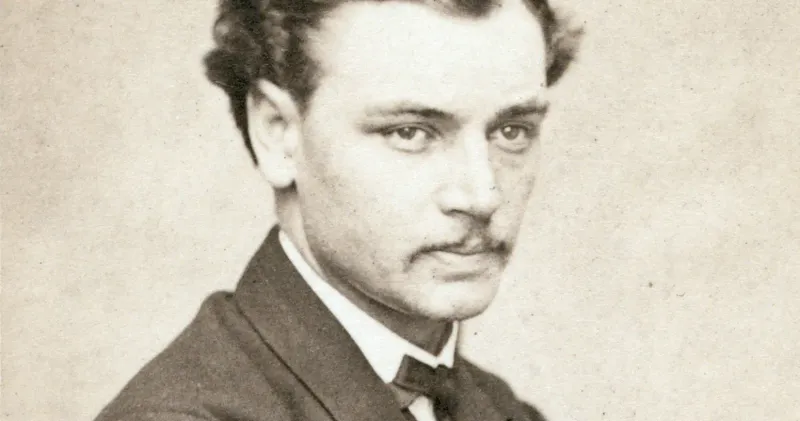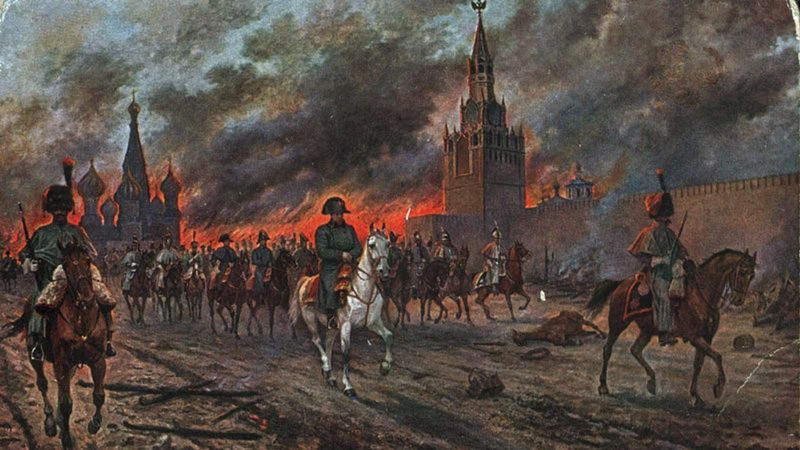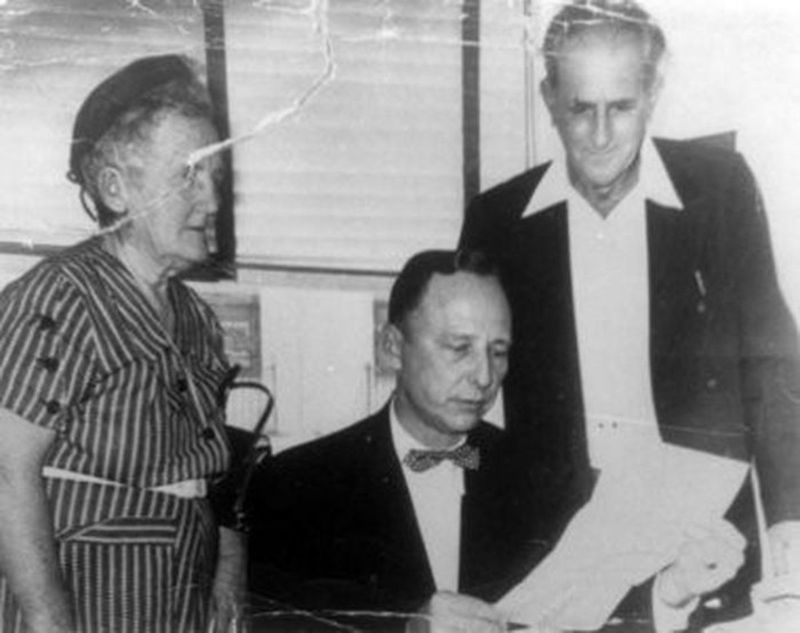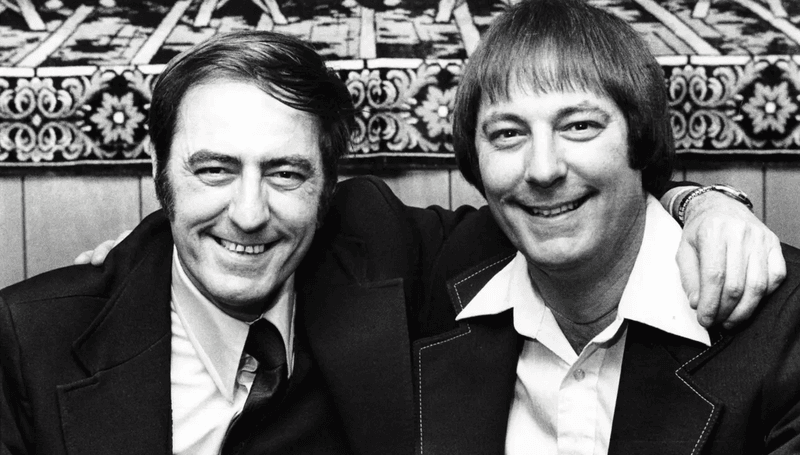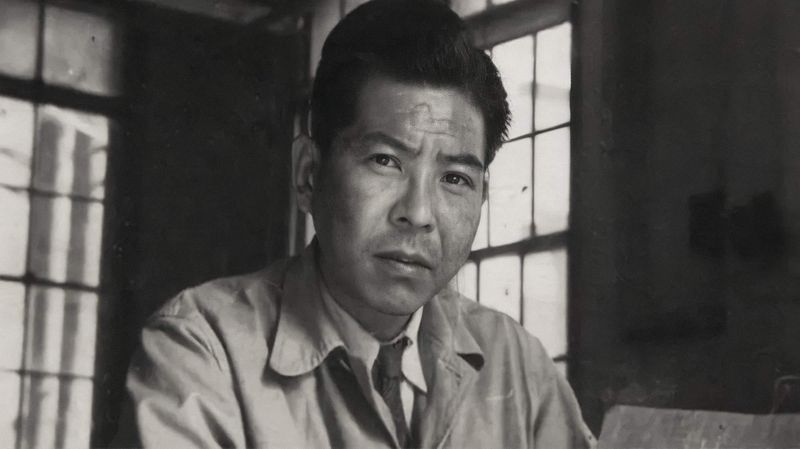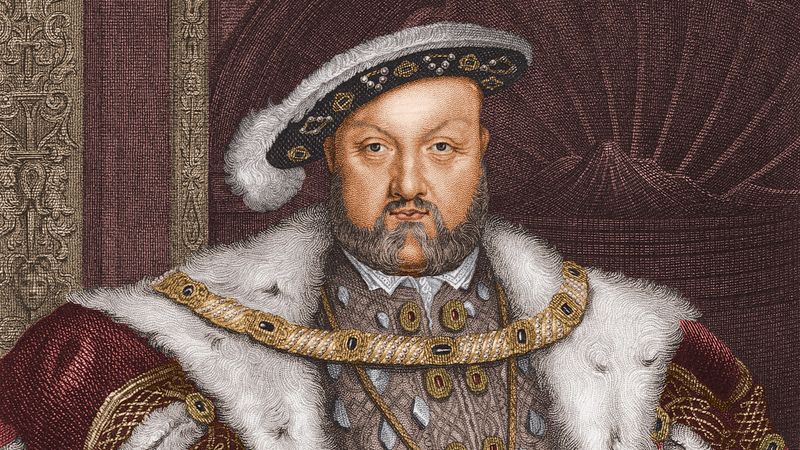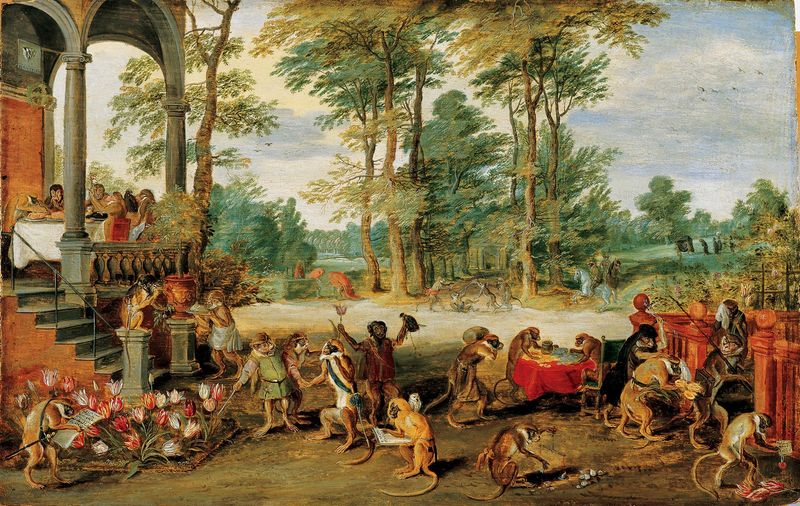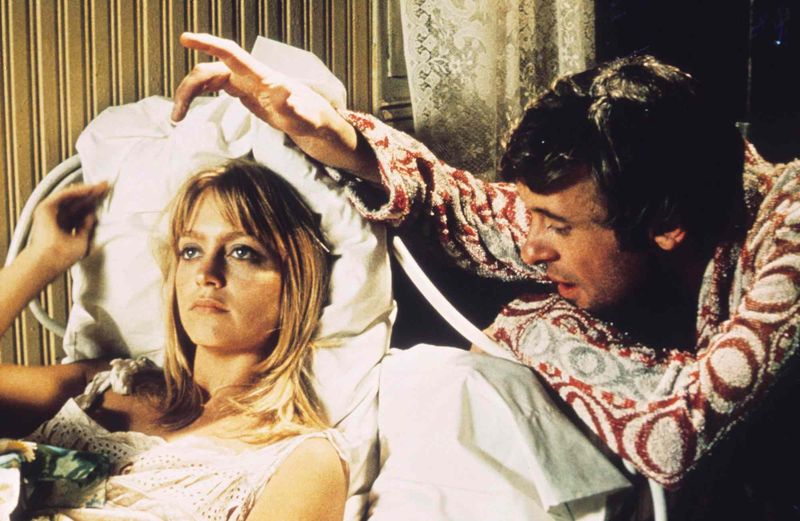History is filled with strange coincidences that boggle the mind and challenge the boundaries of belief. These eerie overlaps in time and space often leave us pondering the mysteries of fate and the inexplicable connections that link us all.
From uncanny similarities between assassinated leaders to bizarre synchronicities involving famous disasters, these stories captivate and mystify.
Here’s a deep dive into 23 of the most chilling historical coincidences that seem almost too strange to be true. Each tale defies logic, unraveling a tapestry of events that entertains as much as it unsettles.
1. The Lincoln-Kennedy Parallels
Few presidential stories are as intertwined as those of Abraham Lincoln and John F. Kennedy. Both were elected to Congress in ’46 and became President in ’60. Astonishingly, both were succeeded by Southerners named Johnson after being assassinated.
The eerie parallels continue with both presidents losing children during their time in the White House. Furthermore, Lincoln’s secretary, named Kennedy, and Kennedy’s secretary, named Lincoln, warned them about assassination risks.
These connections have fascinated historians and conspiracy theorists alike, raising questions about fate’s role in history. Could these parallels be mere coincidence or something more profound? The mystery endures.
2. The Sinking of the Titan
Before the Titanic’s tragic sinking, author Morgan Robertson wrote ‘Futility,’ a novel eerily similar to the real event. The fictional ship, Titan, hit an iceberg on its maiden voyage, just like the Titanic.
Coincidentally, both ships were of similar size and carried insufficient lifeboats for passengers. Robertson’s book, published 14 years before the Titanic’s demise, even predicted the month of the disaster—April.
The uncanny similarities between the book and the actual event have led many to speculate about Robertson’s foresight. Was it a mere twist of imagination or an unexplainable premonition? The enigma persists.
3. The Hoover Dam Deaths
The construction of the Hoover Dam, a monumental engineering feat, was not without its tragedies. J.G. Tierney was the first to die during its construction, a sad beginning to a series of accidents.
His son, Patrick Tierney, would be the last recorded death at the site, exactly 13 years later on the same day. This coincidence of father and son meeting identical fates on the same date adds an eerie layer to the dam’s history.
Many consider this an example of fate’s mysterious ways. Is it a reminder of the risks of progress or just a strange happenstance?
4. The Curse of Tamerlane’s Tomb
In 1941, Soviet archeologists opened the tomb of Tamerlane, a Central Asian conqueror, despite warnings of a curse. Inscribed on the tomb were words predicting doom for those who disturbed his rest.
Remarkably, two days after the grave was opened, Nazi Germany invaded the Soviet Union. The timing led many to believe in the curse’s power. The remains were reburied with full Islamic rituals in 1942, shortly before the Soviets began gaining victories against the Nazis.
This sequence of events has intrigued historians and those fascinated by curses. Was it just timing, or did the curse truly hold power? The debate continues.
5. The Birth and Death of Thomas Jefferson and John Adams
Thomas Jefferson and John Adams, founding fathers of the United States, shared an extraordinary bond beyond politics. Both men passed away on July 4, 1826, the 50th anniversary of the Declaration of Independence.
Their deaths on such a significant date add to their legendary status. Despite political rivalries, they shared a profound respect and friendship. Their synchronous deaths seemed to mark the end of an era, symbolizing the nation’s journey from independence to maturity.
This poignant coincidence serves as a reminder of their lasting impact on the country’s history. Could it be fate’s poetic touch that sealed their legacies together?
6. The Roman Coincidence
Julius Caesar’s legacy is filled with intrigues, and one particular coincidence stands out. A Roman coin, minted decades after Caesar’s death, depicted his assassination scene.
This coin, found in Macedonia, served as a tool for propaganda, reminding Romans of the republic’s fragility. The depiction of Caesar’s tragic end on currency was a chilling reminder of power’s precarious nature.
This historical artifact connects the past with the present, showing how monetary symbols can carry powerful messages. Was it merely a record of history or a deliberate cautionary tale? The coin continues to spark debate among historians and numismatists.
7. Edgar Allan Poe’s Time-Traveling Tale
Edgar Allan Poe, known for his macabre tales, penned a story with an uncanny resemblance to a real event. In ‘The Narrative of Arthur Gordon Pym,’ survivors of a shipwreck draw lots to decide who will be eaten.
The chosen victim shares his name, Richard Parker, with a man eerily eaten after a shipwreck decades later. This strange coincidence between fiction and reality has intrigued literary scholars.
Did Poe possess a prophetic vision, or was it a mere stroke of chance? The connection between Poe’s dark imagination and real events blurs the line between fiction and reality.
8. Mark Twain’s Comet Connection
Mark Twain, one of America’s greatest writers, shared an extraordinary link with Halley’s Comet. Born in 1835, the year the comet passed Earth, Twain predicted he would “go out with it.”
True to his words, Twain passed away in 1910, as the comet returned. This remarkable alignment of events adds a cosmic twist to Twain’s legacy. His life, spanning from one comet appearance to the next, has fascinated astronomers and literary fans alike.
Was it a cosmic coincidence or Twain’s wit extending beyond life? The universe’s mysteries resonate in this extraordinary tale, leaving us pondering celestial connections.
9. The Great Fire of London Predictions
In 1666, the Great Fire of London devastated the city, and an eerily similar event had been predicted years before. An astrologer, William Lilly, created woodcut images depicting London in flames.
Published in 1651, the images presented an alarming preview of the disaster that would occur 15 years later. This uncanny prediction led many to believe in Lilly’s astrological abilities, although skeptics argue it was mere coincidence.
The connection between prediction and reality remains a topic of debate, with some considering it a stroke of prophetic insight. Did Lilly truly foretell the future, or was it just a chilling coincidence?
10. The 27 Club
The “27 Club” is a haunting term used to describe iconic musicians who passed away at the age of 27. The list includes legends like Jimi Hendrix, Janis Joplin, Jim Morrison, and Kurt Cobain.
This age, marking the end of their creative lives, has sparked intrigue and speculation. Some believe in a mystical significance to the number, while others see it as a tragic coincidence.
The legacy of these musicians endures, with their music continuing to inspire generations. Is there a pattern to these premature deaths, or is it mere happenstance? The “27 Club” remains an enigma in music history.
11. The Tale of Violet Jessop
Violet Jessop’s life story is one of survival against all odds. She worked on the Olympic, Titanic, and Britannic—three sister ships, all of which experienced disaster. Jessop survived each calamity, earning her the nickname “Miss Unsinkable.”
Her uncanny ability to escape death has puzzled many. Some see her story as a testament to human resilience, while others marvel at the strange coincidences surrounding her life.
Did fate play a role in her survival, or was it sheer luck? Jessop’s tale continues to intrigue, blending themes of courage and mystery in a narrative almost too incredible to believe.
12. The Double Tragedy of the Hindenburg
The Hindenburg disaster of 1937 was a catastrophic event, and remarkably, it wasn’t the only airship tragedy for the Zeppelin family. In 1912, Count Zeppelin’s first airship also met a fiery end.
The repeating pattern of airship calamities has led to speculation about curses and fate. These tragedies, occurring 25 years apart, both captured public attention and highlighted the inherent dangers of airship travel.
Was there a curse, or were these incidents merely the risks associated with early aviation? While technology has evolved, the Hindenburg’s fiery demise remains a symbol of ambition and tragedy entwined.
13. The Curious Case of the ‘Titanic’ Watch
A pocket watch recovered from the Titanic wreckage holds a chilling coincidence. The watch, belonging to passenger John Chapman, stopped precisely at 2:20 AM—the exact time the Titanic sank.
This eerie detail adds a poignant layer to the tragedy, mirroring the ship’s final moments. The watch’s frozen time has been preserved as a haunting reminder of the disaster. Was it just a malfunction, or did it capture the Titanic’s last breath?
This relic, suspended in history, symbolizes the human stories lost to the sea. Chapman’s watch continues to evoke emotions, connecting us to the past in a profoundly personal way.
14. The Uncanny Connection of King Umberto I
In 1900, King Umberto I of Italy dined at a small restaurant and discovered the owner looked exactly like him. Both men not only shared the same name but were also born in the same town on the same day.
As if this wasn’t enough, both were married on the same day to women named Margherita.
The eerie coincidences culminated in both men dying tragically on the same day. This odd connection between a king and a commoner remains one of history’s most bizarre tales.
15. The Fall of Constantinople’s Solar Eclipse
The fall of Constantinople in 1453 marked the end of the Byzantine Empire, a pivotal moment in world history. As Ottoman forces besieged the city, a solar eclipse occurred, casting an ominous shadow over the embattled defenders. For many, this celestial event was perceived as an omen of impending doom.
The Byzantine Empire had stood for over a thousand years, and the coincidence of a solar eclipse during its final days added a layer of eerie symbolism. It was as if the heavens themselves foretold the end of an era.
The eclipse, visible across Europe and the Middle East, became part of the legend surrounding the city’s fall, a chilling reminder of how natural phenomena can intertwine with human destiny.
16. The Eerie Connection of Robert Todd Lincoln
Robert Todd Lincoln, son of President Lincoln, had a life shadowed by eerie coincidences. He was present or nearby for three presidential assassinations: his father’s, James Garfield’s, and William McKinley’s.
This pattern of proximity to national tragedy has fueled speculation about fate’s role in his life. Lincoln himself believed in the burden of these connections. Was he cursed, or did history place him at these pivotal moments?
Despite the dark associations, Lincoln’s achievements in law and politics are often overshadowed by these coincidences. His story remains a curious blend of personal success and historical intrigue.
17. Napoleon and Hitler’s Russian Misadventures
Napoleon and Hitler, separated by over a century, shared a fateful error: invading Russia. Both leaders met their downfall as their armies succumbed to the harsh Russian winter.
Napoleon’s 1812 campaign and Hitler’s 1941 invasion unfolded with chilling parallels, each leading to catastrophic losses. These military debacles underscore the formidable challenge of Russian winters, a lesson seemingly unheeded by history’s greatest strategists.
The coincidence extends beyond mere military strategy, hinting at the hubris of power. Was this shared fate a cosmic warning or simply a recurring historical theme? The stories of these leaders serve as cautionary tales against overreach.
18. The Phantom Barber of Pascagoula
In 1942, Pascagoula, Mississippi, was gripped by fear of the “Phantom Barber.” This elusive figure would sneak into homes, cutting hair of sleeping residents.
Despite numerous incidents, the barber’s identity was never uncovered, leaving the town in suspense. The bizarre nature of these crimes captivated the public imagination, with theories ranging from military experiments to pure pranks.
The lack of motive and evident skill in avoiding capture added to the mystery. Was the Phantom Barber a disturbed individual or a figment of collective paranoia? The enigma remains, lingering in the annals of strange historical oddities.
19. The Strange Fate of the Jim Twins
Separated soon after birth and adopted by different families, the Jim Twins led eerily parallel lives. Both were named James, married women named Linda, divorced, then remarried women named Betty. They each owned dogs named Toy and worked in security.
They were reunited at the age of 39, unaware of each other’s existence, yet sharing nearly identical interests, habits, and life choices. Their reunion became a fascinating study in genetics versus environment, sparking debates on the influence of nature versus nurture.
The uncanny similarities between the Jim Twins highlight the mysterious interplay between genetic predisposition and individual experiences, leaving us to wonder about the unseen forces shaping our lives.
20. The Remarkable Resilience of Tsutomu Yamaguchi
Tsutomu Yamaguchi’s story is one of unbelievable survival. He was in Hiroshima on August 6, 1945, when the atomic bomb was dropped. Miraculously, he survived the blast, sustaining severe burns. Three days later, he returned to Nagasaki, his hometown, only to experience the second atomic bombing.
Despite being exposed to such unimaginable devastation twice, Yamaguchi lived into his nineties, becoming a vocal advocate for nuclear disarmament. His remarkable resilience and survival have become symbols of the human spirit’s endurance against overwhelming odds.
Yamaguchi’s life serves as a poignant reminder of both the horrors of war and the resilience required to survive and rebuild.
21. The Unlikely Connection of King Louis XVI and His Execution Date
King Louis XVI of France, who ruled during a turbulent period of French history, is often associated with the day of his execution: January 21, 1793. What makes this date particularly unusual is that it coincided with the date of a prophecy regarding the downfall of the French monarchy.
A mere coincidence? Perhaps. But astrologers of the time had long pointed to this date as significant in royal downfall predictions. Louis, unfortunately, met his fate on this ominous day, adding a chilling layer to the historical narrative.
The synchronicity of this date has sparked debates among historians and enthusiasts alike, pondering the role of destiny and foresight in shaping history.
22. The Curious Case of the Dutch Tulip Mania
In the 1630s, the Netherlands experienced a phenomenon known as Tulip Mania, where the price of tulip bulbs reached extraordinarily high levels. At the same time, across the world, other economic bubbles were forming, suggesting a strange synchronicity in financial behavior.
This coincidence highlights the peculiar nature of human psychology and economy, where unrelated cultures experienced similar economic phenomena simultaneously. Was it mere chance, or is there a deeper, underlying pattern in how societies react to prosperity and risk?
Tulip Mania eventually led to a dramatic market crash, serving as a cautionary tale that echoes through the ages, warning of the dangers of speculative investments.
23. The Coincidental Lives of Anthony Hopkins and ‘The Girl from Petrovka’
Anthony Hopkins experienced an extraordinary coincidence while preparing for his role in ‘The Girl from Petrovka.’ Unable to find a copy of the book, he discovered one on a bench in London.
Remarkably, it was the author’s personal copy, filled with annotations. This chance encounter added an unexpected layer to Hopkins’s preparation, merging fiction and reality.
The serendipity of finding that specific copy is a reminder of the strange twists of fate that can occur in everyday life. Was it a destined meeting or sheer luck? This story highlights the unpredictable nature of life and the magical moments that can unfold.

